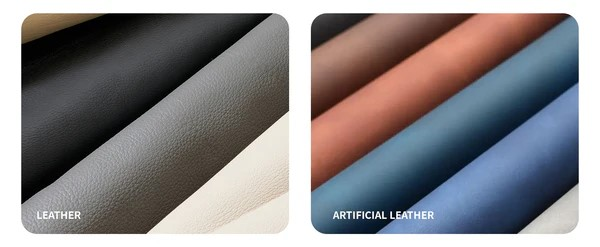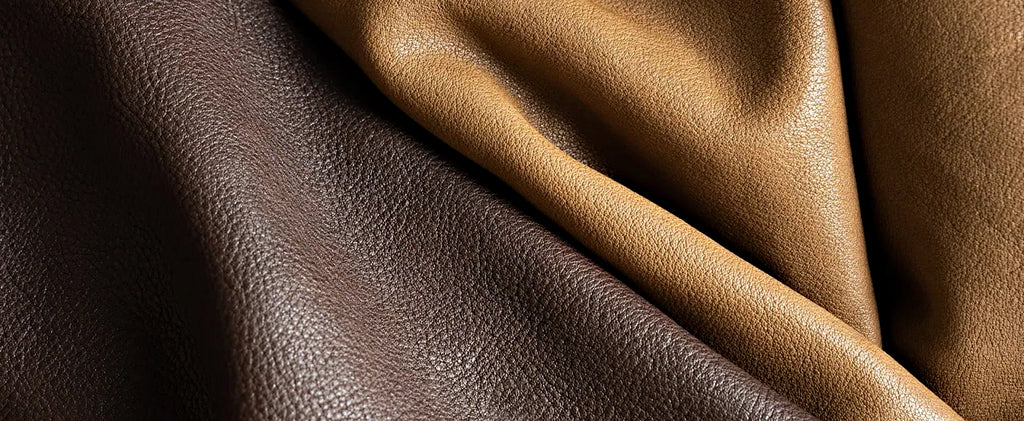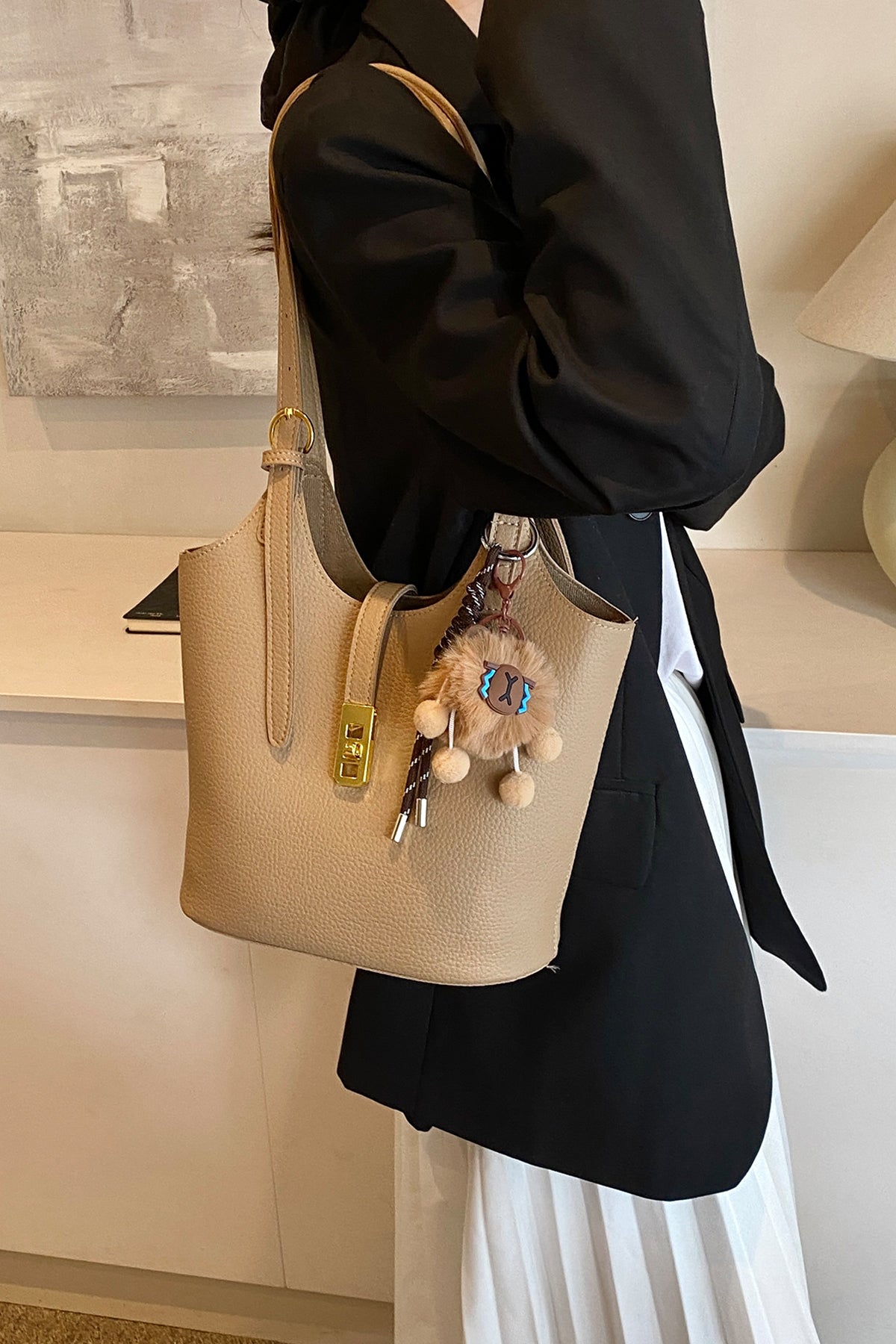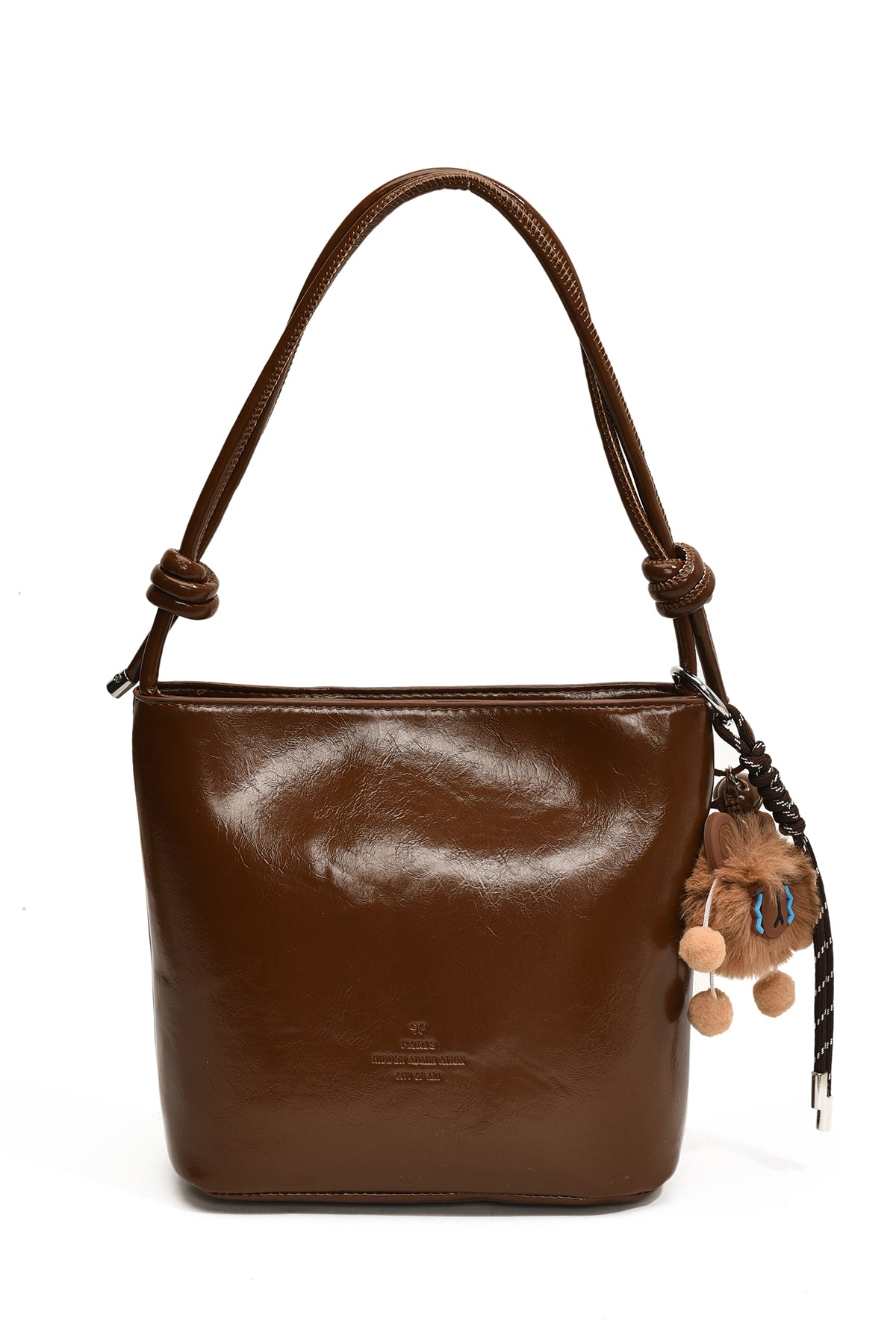PU Leather VS. Faux Leather: A Comprehensive Guide
When shopping for leather alternatives, it’s easy to be overwhelmed by the variety of materials available. Understanding the distinctions between PU leather and faux leather can help you make informed, value-driven choices. Both materials offer a cruelty-free alternative to genuine leather, but they come with their own unique attributes, benefits, and use cases. This guide explores the differences between PU leather and other types of faux leather, helping you navigate the world of synthetic leather options.

1. What Is PU Leather?
PU leather, short for Polyurethane leather, is a synthetic material crafted to replicate the look and feel of real leather. Commonly used in fashion and upholstery, PU leather is made by applying a polyurethane layer to a fabric base, usually polyester or cotton. Known for its durability and flexibility, this material is widely popular for budget-conscious consumers who seek a leather-like product without ethical concerns. Additionally, PU leather is highly adaptable in terms of color and texture, making it a favorite among designers.
2. Advantages of PU Leather
Affordability:PU leather is a cost-effective option, accessible to a broad audience. It’s particularly appealing to younger consumers and is widely available online and in retail stores worldwide, making leather-like products more attainable for all.
Versatile Design Choices:Thanks to its engineered production, PU leather comes in various finishes, colors, and textures, allowing creative freedom in fashion and home décor. This flexibility gives designers a vast canvas for experimenting with unique styles and aesthetics.
Animal-Friendly Choice:With growing interest in ethical and sustainable consumption, PU leather has become a go-to for eco-conscious shoppers. The absence of animal-derived ingredients aligns with vegan and cruelty-free lifestyles, meeting the demands of modern, responsible consumers.
Easy Maintenance: Unlike genuine leather, PU leather requires minimal upkeep, allowing users to enjoy a polished look without frequent conditioning or specialized care. Cleaning PU leather generally only requires a soft cloth and mild soap, making it highly practical for daily use.
3. What Is Faux Leather?
Faux leather encompasses a broader category of synthetic leather materials, including PU leather and PVC leather (Polyvinyl Chloride). Faux leather can replicate the appearance of genuine leather but is typically more environmentally conscious and animal-friendly. Whether it’s crafted from polyurethane or PVC, faux leather is widely used in various industries, meeting the demand for affordable, stylish, and cruelty-free products.
4. Advantages of Faux Leather
Sustainable Choice: Many forms of faux leather use eco-conscious materials, which reduce the environmental impact associated with genuine leather production. Brands increasingly label these materials, allowing consumers to make more informed choices regarding sustainability.
Design Flexibility: Faux leather offers a vast array of design possibilities, available in numerous colors, textures, and finishes. This versatility allows for customization across applications, from bags and accessories to furniture and car interiors.
Uniformity in Texture and Appearance: Faux leather provides a consistent look and feel, which can be a major advantage for brands seeking uniformity in product lines. Unlike genuine leather, which has natural variations, faux leather products have a predictable aesthetic.
Enhanced Durability: Known for its resilience, faux leather is resistant to scratches, water, and general wear and tear. Although it doesn’t match the durability of genuine leather over decades, it still offers excellent longevity, making it a practical choice for many consumers.
5. Key Similarities Between PU Leather and Faux Leather
Synthetic Composition: Both PU leather and other types of faux leather are synthetic, emulating the look and texture of natural leather while offering cruelty-free alternatives.
Ease of Care: Unlike genuine leather, these materials are low-maintenance, requiring only simple cleaning to maintain their appearance.
Wide Range of Design Options: Both types come in multiple colors, textures, and patterns, allowing for creative versatility in fashion, upholstery, and other applications.
Animal-Friendly Production: As no animal products are used in their creation, both materials are ideal for consumers committed to cruelty-free and vegan choices.
6. Distinctions Between PU Leather and Faux Leather
Material Composition: PU leather is a specific type of faux leather that uses a polyurethane coating, while faux leather as a general term includes various synthetic materials like PVC and other composites.
Base Materials: Faux leather can have various bases, including polyurethane, fabric, or PVC, while PU leather specifically involves a fabric base coated with polyurethane.
Texture and Flexibility: PU leather tends to be softer and more flexible compared to other types of faux leather, which can sometimes feel stiffer.
Environmental Impact: The environmental footprint varies among faux leather types. PU leather is often considered more eco-friendly than PVC due to its production methods and material properties.
Price Range: Faux leather encompasses a broad spectrum, from inexpensive PVC options to higher-end PU leather products. As such, PU leather is generally more affordable than genuine leather but can vary in price compared to other faux materials.
7. Choosing the Best Option for You
When selecting between PU leather and other types of faux leather, consider what’s most important to you. PU leather is an excellent choice for those seeking affordability, ease of maintenance, and a softer feel, whereas broader faux leather options may offer enhanced durability or unique textures. Reflect on your design goals, budget, and lifestyle preferences to make the right choice for your needs.
8. Price Range Expectations
The price for PU leather and other faux leather items varies significantly. Factors such as brand, quality, and production costs all play a role in determining price. While budget-friendly options start as low as $5, high-quality faux leather items can reach up to $500, especially for luxury brands. Generally, PU leather remains more affordable than genuine leather, making it a practical choice for fashion enthusiasts on a budget.
9. Where to Shop for Quality Faux Leather Goods
For those interested in stylish and affordable leather alternatives, various online retailers and fashion brands offer a range of options. Many companies, such as Macghee, offer PU and imitation leather bags, PU women's boots made from environmentally friendly materials, meeting modern demands for sustainability and quality.

Conclusion
As the market for sustainable fashion and ethical design grows, PU leather and faux leather stand as popular choices for eco-conscious consumers. Whether you're drawn to the low maintenance and affordability of PU leather or the extensive versatility of faux leather, each offers a unique set of benefits to suit different needs and preferences. With this guide, you’re equipped to make an informed choice that fits both your style and your values.

























































































































































































